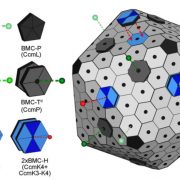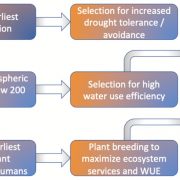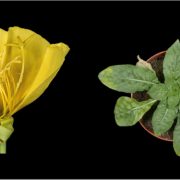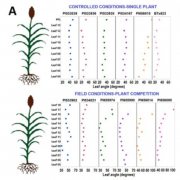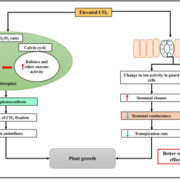Characterization of pyrenoid-based CO2-concentrating mechanism in hornworts
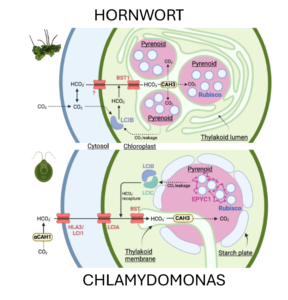 Pyrenoids are structures that concentrate carbon dioxide around Rubisco, most commonly studied in green algae such as Chlamydomonas. However, hornworts, one of the three types of bryophytes (along with liverworts and mosses) also have a pyrenoid-based CO2-concentrating mechanism (pCCM), unique among land plants. Here, Robison et al. characterize the pCCM in the model hornwort Anthoceros agrestis. The authors used electron microscopy and live-cell imaging to visualize the hornwort pCCM. They noted some differences from the pCCM of Chlamydomonas, including that hornworts have multiple pyrenoids in each chloroplast, in contrast to the single pyrenoid in Chlamydomonas. They further showed that the hornworts lack the starch sheath present in algal pyrenoids. They also used co-IP and fluorescent reporters to identify and characterize several pyrenoid-specific proteins, noting that many are present in the hornwort pCCM, but that the linker protein EPYC1 seems to be missing. As the authors report, characterizing the pCCM in hornworts provides new opportunities to engineer such structures in crops and other land plants. (Summary by Mary Williams @PlantTeaching) bioRxiv https://doi.org/10.1101/2024.06.26.600872
Pyrenoids are structures that concentrate carbon dioxide around Rubisco, most commonly studied in green algae such as Chlamydomonas. However, hornworts, one of the three types of bryophytes (along with liverworts and mosses) also have a pyrenoid-based CO2-concentrating mechanism (pCCM), unique among land plants. Here, Robison et al. characterize the pCCM in the model hornwort Anthoceros agrestis. The authors used electron microscopy and live-cell imaging to visualize the hornwort pCCM. They noted some differences from the pCCM of Chlamydomonas, including that hornworts have multiple pyrenoids in each chloroplast, in contrast to the single pyrenoid in Chlamydomonas. They further showed that the hornworts lack the starch sheath present in algal pyrenoids. They also used co-IP and fluorescent reporters to identify and characterize several pyrenoid-specific proteins, noting that many are present in the hornwort pCCM, but that the linker protein EPYC1 seems to be missing. As the authors report, characterizing the pCCM in hornworts provides new opportunities to engineer such structures in crops and other land plants. (Summary by Mary Williams @PlantTeaching) bioRxiv https://doi.org/10.1101/2024.06.26.600872


